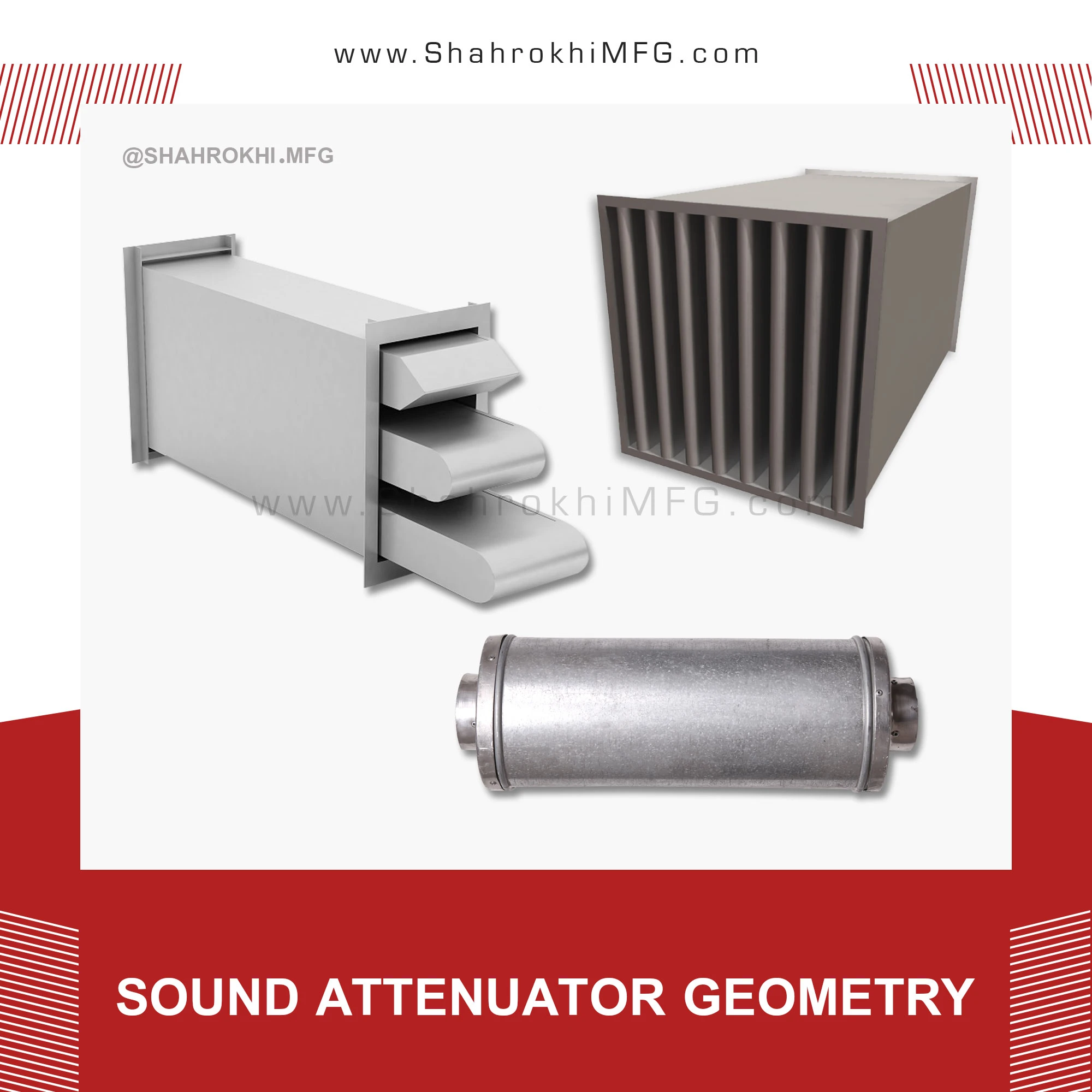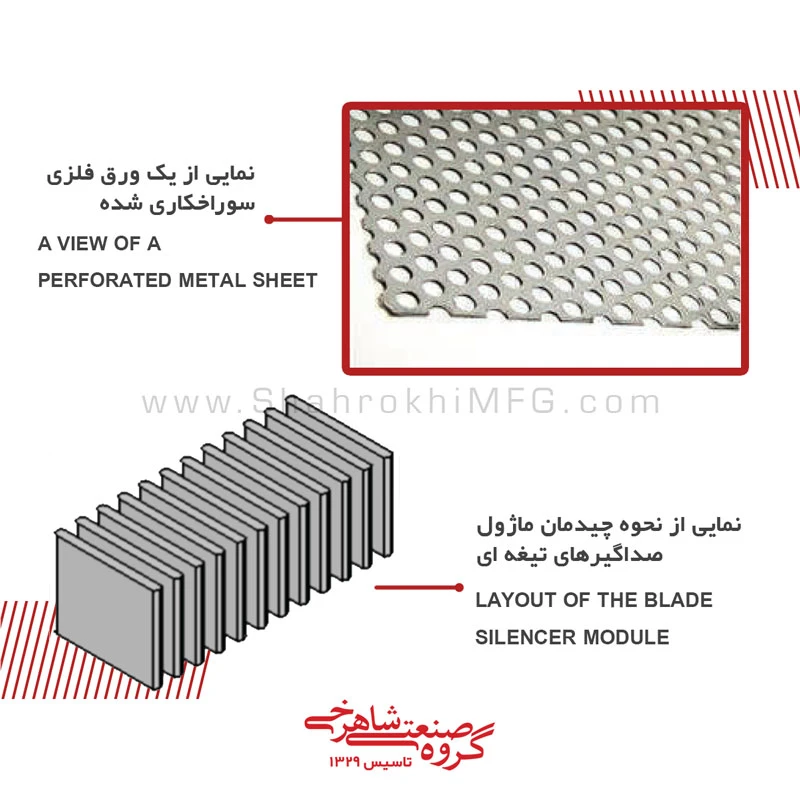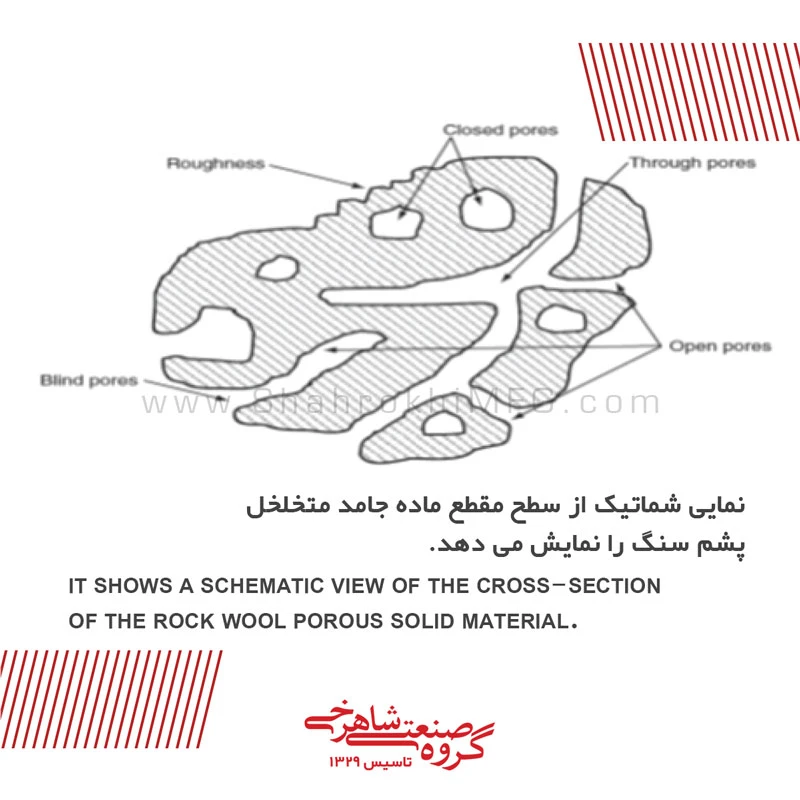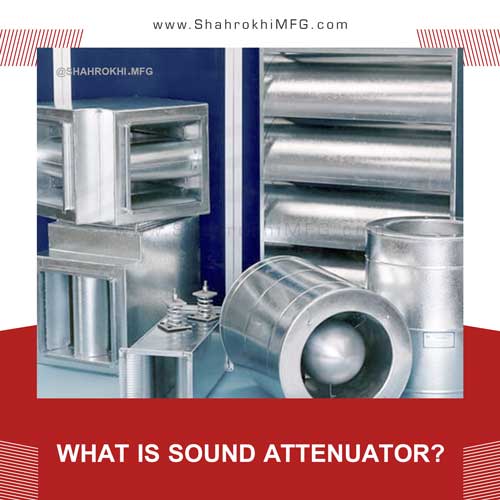sound attenuator geometry
The structure of sound attenuator consists of one millimeter-thick perforated sheets, where porous materials are placed between the two sheets depending on the place of use.
Sound absorbers that are used in most cases today are in the form of vertical blades with specific length and width. Blades placed next to each other with equal distances in the ventilation channels. Therefore, passing through these blades by two surfaces and the sound absorbing property of the porous materials in the body of the blade, the air flow loses its accompanying sound to a certain extent.
Advantages and disadvantages of sound attenuator
These sound attenuators have advantages, among which we can point out stability against air flow and wind speed, as well as the ability to replace damaged modules. In expressing the disadvantages of using this arrangement method, we can also mention sound attenuator by the side walls of the absorbers and the use of many connections to keep them standing and their heavy weight.
What is a sound attenuator?
In the air conditioning ducts, generally, due to the operation of the fan, whether axial fans or centrifugal fans, an unpleasant sound is dispersed in the environment. The intensity of this noise varies depending on factors such as the type of fan, the distance of the fan from the location, the type and type of channels and branches, the type of surrounding walls and other such factors, but in any case, the presence of this noise will create an uncomfortable environment for the residents.
Channel sound attenuator
Nowadays, channel sound attenuator are used to solve this problem. With their special design, these silencers, in addition to reducing the impact on ventilation air flow, eliminate the sound produced by air conditioners to a very high extent. Silencers are widely used in industries such as metallurgy, electricity and power, mining and subway tunnels and interior architecture in order to reduce the sound of the air conditioning system.
The type and design of sound attenuator
The type and design of sound attenuator is such that it absorbs the noise produced with all kinds of frequencies and in the range of human hearing (from 63 Hz to 8000 Hz) it provides comfortable environmental conditions in terms of sound. In this regard, the design of a sound absorber that can provide these conditions in the environment is of particular importance in such a way that in case of improper design, the sound absorber will be able to absorb sound and as the factor of creating sound, it will double the difficulties. The basis of sound absorption in sound absorbers is based on the absorption of waves in porous materials.
Porous absorbent material
Sound absorbing materials absorb most of the sound energy and reflect a small amount of it. Therefore, the use of these materials is very useful to control the amount of noise, and they are used in various places such as points close to sources of noise production (such as fans in air conditioning systems) and inside air transmission channels.
There is a wide range of these materials that provide a variety of absorption properties based on sound frequency, composition type, thickness, outer surface, and installation method. Meanwhile, materials with high sound absorption coefficients are usually porous. A porous absorbent material is a solid that contains holes, channels, or slits that sound waves can enter.
Types of porous absorbent materials
Stone wool is among the family of thermal insulators consisting of mineral fibers. The primary and main material for the production of this insulation is basalt stone, from the group of igneous rocks, which is a remnant of volcanic activity. Due to the streakiness of its raw materials, its manufactured product may not have uniform purity. The method of producing stone wool is that basalt stone is first melted at a temperature of 1500 degrees Celsius and becomes molten silicate.
Then the resulting melt is transformed into fibers with a diameter of about 6 microns under special methods. The set of these fibers make up rock wool. Also, this insulation is a very desirable sound insulation due to the absence of sound propagation among the components and sound absorption. Therefore, they are installed in airports, recording studios, under the rails and in metro stations in the city. Increasing the thickness and creating a suitable air gap behind the insulation increases the amount of sound energy attenuation.





Leave a Reply
Want to join the discussion?Feel free to contribute!